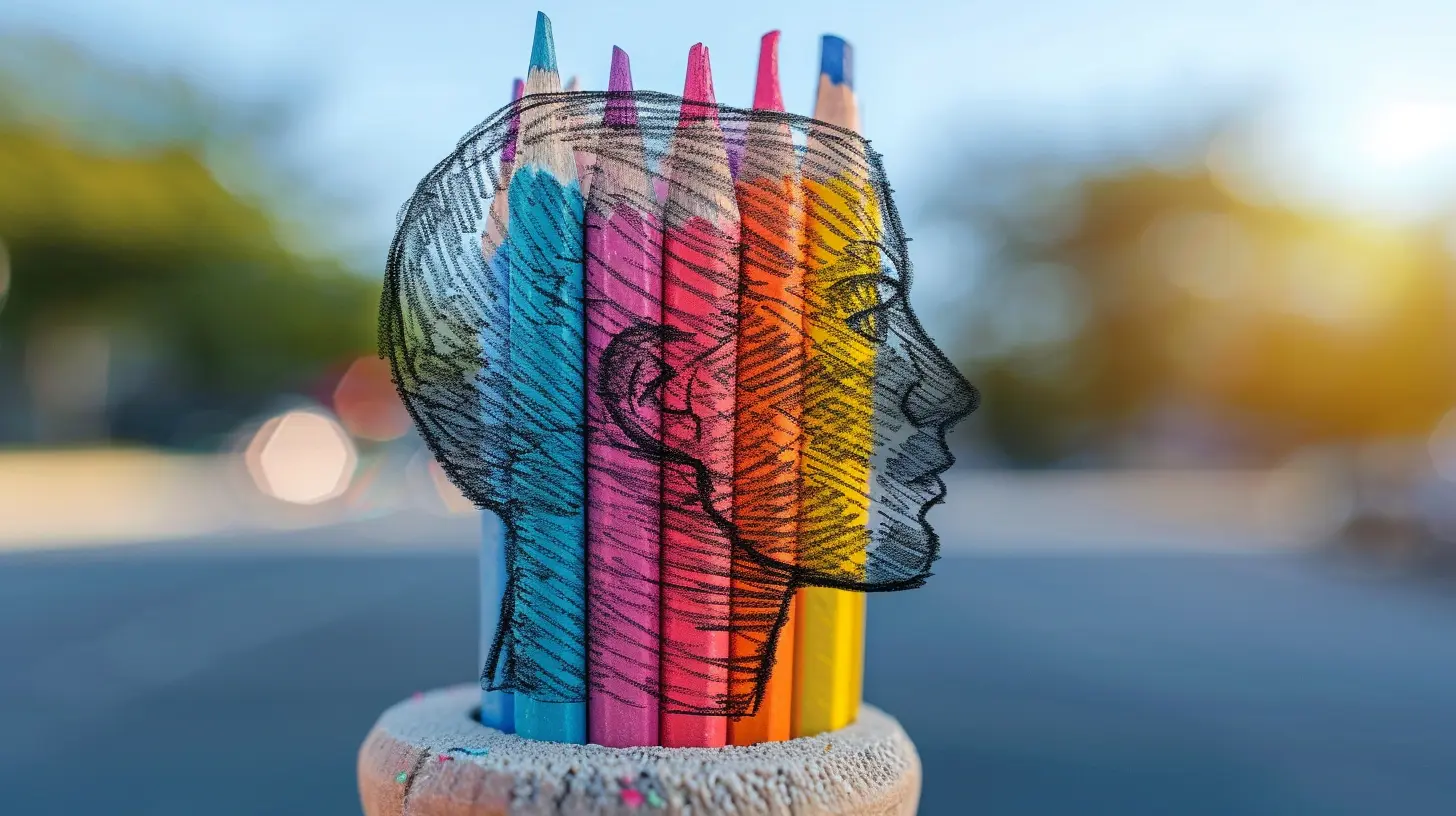25 October 2025
Ah, data—those tiny nuggets of numbers and stats that rule our lives like a benevolent (or sometimes chaotic) digital overlord. From Instagram likes to political polling, everything seems to be driven by data these days. But here's the catch: data isn't just about numbers—it's about meaning. And teaching students to think critically about data? That’s the secret sauce to turning passive information consumers into savvy, data-crunching superstars.
In this guide, we're diving into how to teach students to think critically about data—without boring them to tears. Whether you're a teacher, a parent, or a brave curriculum designer, you’re in the right place.

Why Teaching Critical Thinking About Data Matters
Let’s be honest—numbers can lie (or at least bend the truth a little). A chart with the axes tweaked just so, or a "study" funded by a biased organization? Suddenly, data isn’t as objective as we thought.If we want students to survive—and thrive—in a world that’s basically one big spreadsheet, they need to know how to question what they see. Critical thinking about data means asking: “What does this data really say? Who collected it? What’s missing?”
Teaching this is a bit like giving students x-ray vision. They start spotting flaws and biases in graphs, articles, and news headlines faster than you can say "standard deviation."

Step 1: Start With Curiosity, Not Complexity
Before we get all excited about statistical models and regression analysis, let’s reel it in a bit.Data shouldn’t feel like a foreign language. Instead of diving into formulas right away, start with questions students actually care about:
- What’s the most popular pizza topping in school?
- Do students who sleep more get better grades?
- Is TikTok really rotting our brains?
Let them collect data on things that matter to them. When students are personally invested, they’re more likely to dig in and start questioning the results.
_Moral of the story: Curiosity is the gateway drug to data literacy._

Step 2: Teach Them to Sniff Out Bias Like a Detective
Bias in data is sneakier than your sibling stealing fries off your plate when you’re not looking. If students don’t know what it looks like, they’ll fall for flashy statistics and misleading graphs.Here’s how to help them spot bias:
- Who collected the data? Always ask who’s behind the numbers. Data from a cereal company saying breakfast is the most important meal? Suspicious, right?
- How was it gathered? Small sample sizes, leading questions, and unrepresentative groups all lead to skewed results.
- What’s missing? Sometimes what you don’t see is the biggest red flag. Missing data points or lack of context can completely shift how you interpret the results.
You could even set up a little “Data Detective” activity where students analyze fake infographics and uncover the sneaky tactics used to mislead. Sherlock Holmes would approve.

Step 3: Visuals Are Powerful—Use Them Wisely
Who doesn’t love a good graph? They’re like Instagram filters for numbers—making everything look sleek and digestible. But visuals can be manipulative little gremlins if you’re not careful.Teach students to question charts like they’re on a first date with them:
- Are the axes manipulated?
- Is there a legend?
- Are the scales consistent?
- Do the colors imply something they shouldn’t?
Compare different versions of the same data shown using various graphs—some honest, some misleading. Let students critique them like art critics at a modern gallery. Bonus points if they get dramatic.
Step 4: Encourage Skeptical Thinking, Not Cynicism
There’s a fine line here.We don’t want students to walk away thinking “all data is fake” (they already think that about the school lunch menu, anyway).
The goal is healthy skepticism. That means asking thoughtful questions and looking for evidence—not dismissing everything outright. Teach them to look for:
- Source credibility
- Peer-reviewed information
- Transparent methodology
Use real-world examples—like how vaccine data was evaluated (or misunderstood) during the pandemic. Make it real, not just theoretical. And remind students: Being critical doesn’t make you a buzzkill—it makes you the smartest person in the Zoom room.
Step 5: Make Data Part of a Story
Data is just numbers until we put meaning behind it. One of the best ways to help students grasp this is by showing how data tells a story.Try projects where they gather data, analyze it, and then present it as a narrative. For example:
- "How screen time affects homework quality" – survey their classmates, analyze the results, then present their findings with visuals and recommendations.
- "The hidden world of cafeteria food waste" – collect data, crunch the numbers, and write a report that reads like a mini-investigative piece.
When students learn that data isn’t just about crunching numbers—it’s about telling truths—their whole perspective shifts.
Step 6: Debunk Misinformation Together
Let’s face it, misinformation is everywhere. That viral tweet? That overly dramatic YouTube thumbnail? Yeah, students see way more fake data than real.Turn this into a learning moment.
Give them headline examples that use data poorly. Let them dissect misleading claims and look up the actual studies behind them.
You’re not just teaching them to think critically—you’re giving them the tools to fight digital nonsense with logic and facts. It’s practically a superpower.
Step 7: Use Fun Tech Tools and Games
Boring spreadsheets? Goodbye!Interactive tools like Google Forms, Canva for infographics, and Kahoot quizzes take things up a notch. Let students create their own surveys and analyze class responses. Or try online simulations that let them change variables and instantly see results.
Gamify it: Who can find the biased report fastest? Who spots the most misleading chart?
When tech and creativity mesh with critical thinking, the learning sticks. And you might hear that rarest of teacher music—students saying “That was actually fun.”
Step 8: Model It Every Chance You Get
You can’t teach critical thinking in a vacuum (sorry, that would violate the laws of educational physics).Every time you present information—whether it’s during a lesson, a news article, or even school statistics—walk students through how to question it.
Say things like:
- “Let’s think about where this data came from…”
- “What do you notice about this graph?”
- “If this were your study, what would you do differently?”
Basically, be the Socrates of data. Ask questions. Encourage dialogue. Let students be the detectives and the debaters.
When they see you questioning assumptions, they learn it’s okay (and awesome) to do the same.
Step 9: Let Them Argue With the Data
This might sound counterintuitive, but hear me out.Sometimes the best way to understand data is to argue with it. Set up debates where students must defend a conclusion based on data they’ve interpreted—then have another team poke holes in their argument.
You’re not just teaching analysis, you’re building communication skills, logic, and confidence. It’s like a courtroom drama, but nerdier (and way more useful).
Step 10: Keep It Real and Relevant
Students don’t care about abstract datasets from 1992. What they do care about?- Social media trends
- Climate change impact in their city
- School policies they think are unfair
So... use those.
Real, current, messy data gives students something to analyze and care about. Plus, it shows them that critical thinking isn’t just for math class—it applies to everything from Instagram algorithms to policy debates.
Because at the end of the day, teaching students to think critically about data isn’t just about schooling—it’s about citizenship.
Final Thoughts: Data Doesn’t Lie, But It Whispers
Let’s wrap it up with a little secret: Data doesn’t lie, but it sure as heck doesn’t shout the truth, either. Teaching students to think critically about data is about turning down the noise and listening for the truth behind the numbers.It’s about asking better questions, seeing hidden stories, and spotting red flags in graphs that look too good to be true.
When we teach students to do that, we're not just making them better students—we’re making them smarter humans.
And in today’s data-flooded world, that’s something we could all use a bit more of.








Sebastian Clark
Thank you for this insightful article! Teaching students to critically analyze data is essential in today’s information-rich world. Your practical tips and strategies provide a solid foundation for educators. I look forward to implementing these approaches in my own classroom!
December 10, 2025 at 1:39 PM